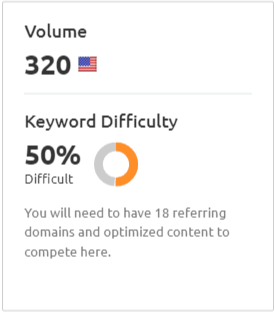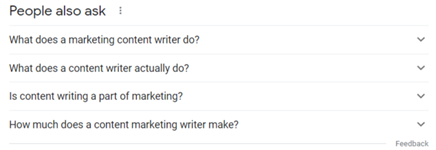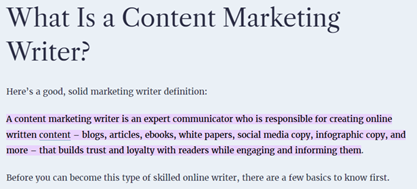
Updated March 7, 2022
In the rush to get on the front page of Google search results, a major opportunity stands out as the most useful and relevant: featured snippets.
At the top of many informational searches, these bits of text provide a quick answer to a searcher’s question. Since featured snippets outrank standard list results, they often are referred to as “position zero.”
If the brief answer appearing on the results page isn’t sufficient, searchers are more likely to click on that link to learn more. Thus, knowing how to increase the chance your content will be the featured snippet is a razor-sharp tool for marketers looking to increase brand awareness and organic traffic.
Knowing how to increase the chance your content will be a featured snippet on Google is a razor-sharp tool for marketers, says @JuliaEMcCoy via @CMIContent. #SEO Click To Tweet
How do you create content that has a high chance of ranking in featured snippets?
While many assume featured snippets are the territory of SEO masters or brands with million-dollar marketing budgets, that isn’t true. In fact, it’s easy to rank for featured snippets with organic content only. You just need the know-how.
What are featured snippets?
Featured snippets are the informational content that shows up in Google’s search engine result pages immediately after the ads and sponsored posts (if available). This search for “how to show ROI for marketing” features a snippet from Marketing Mo:

If the search term attracted sponsored ads, they would appear above the snippet, which ranks as the top organic result. Google shows what it considers high-quality content in this space because it’s focused on fulfilling user intent.
How to earn featured snippets in 4 steps
Earning a featured snippet in Google isn’t as simple as keyword placement or ensuring your content is well-written. I’ll walk through the steps I use (and teach) to create content that ranks and earns snippets. This example walks through how we earned the featured snippet for “marketing content writer.”)

Earning a featured snippet on Google isn’t as simple as keyword placement or well-written content, says @JuliaEMcCoy via @CMIContent. #SEO Click To Tweet
1. Research keywords with low keyword difficulty and high audience relevance
Every piece of content starts with research. Focusing on the wrong metrics will not lead to rankings or featured snippets. The right metrics include keyword difficulty and user relevance.
Keyword difficulty
While doing keyword research for my blog Content Hacker, I found the term “marketing content writer.”
As of this writing, “marketing content writer” has a keyword difficulty (KD) score of 50. When I originally found the keyword, it was approximately 40 in keyword difficulty.
KD is an SEO metric that tells you how hard it is to rank for a certain search term. If your site is relatively new or doesn’t have an established web presence, low KD matters.
Check the keyword difficulty score before you create #content. A low KD is helpful for sites without an established presence, says @JuliaEMcCoy via @CMIContent. #SEO Click To Tweet
Why? It’s impossible to rank for a keyword that established brands have already cornered. (That’s like a newbie runner trying to win a race against an Olympic athlete.) A low KD score essentially tells you the playing field is still open.
Metrics constantly change – which is why I recommend studying them on a weekly basis. Tools like Semrush, KWFinder, and Ahrefs are excellent for keyword data discovery.

That brings me to the next metric when choosing keywords, especially if you have one eye on earning a featured snippet.
Relevance
If the keyword isn’t too competitive, ask yourself how relevant it is to your audience’s pain points.
This boils down to figuring out the user search intent behind the keyword. What is their goal when they type that term into Google? Can you tie it to a pain point your brand solves?
For “marketing content writer,” the search intent is clear after looking at the search engine results page (SERP). The “People also ask” panel is telling:

Searchers want to understand what a “marketing content writer” is, what they do, and/or how to become one – and that is directly relevant to my business. The keyword was perfect for us to target in a blog article.
TIP: What terms resonate with your audience’s location and/or culture? Consider this when going after your keyword search terms.
2. Structure your content for the searcher’s needs
Once you determine your keyword and content topic, you create the content that will raise the chance of Google pulling snippets from your article to feature.
Specifically, always aim to structure your content for the searcher’s needs.
From studying the search results for “marketing content writer,” we know the searcher wants to understand the what – what does a marketing content writer do? Thus, our article answers that question quickly, right underneath the first H2.
Note: While our focus keyword was “content marketing writer,” Google picked up on “marketing content writer” for this featured snippet. There is always a chance of unpredictability with the exact term you’ll earn the ranking for.

Three things to note about this example:
- Stating the searcher’s question in the H2 headline shines a spotlight, so it’s easy to find. Using the H2 also emphasizes its importance when Google crawls the page.
- We answer the question by defining the search term – “A content marketing writer is …” This is featured snippet fodder, and it’s the snippet Google grabbed to display in the SERP.
- We use keyword variations and synonyms as naturally as possible.
Let’s not forget the rest of the content. The remainder of the piece gives the searcher information they need about this topic ordered from most important to least. Again, all of this is guided by the existing search results page, including:
- Addressing facets in the “People also ask” panel
- Studying the content structure of the top five rankings
- Viewing “related searches” for synonymous keywords

3. Aim for consistency across your content to build authority
If I could impart any advice about winning featured snippets, it’s this: A one-shot approach never works.
Consistency matters across all your content. It directly contributes to your domain trust/authority, which is a known ranking factor.
If you only invest in hoped-for featured snippet pieces, your overarching web presence will still be far below Google’s standard. (Read: You won’t win snippets if only some of your content passes muster.)
Your content presence as a whole needs to check these points:
- High quality
- Comprehensive
- Engaging
- User-focused
Don’t cut corners: Your content must fire on all cylinders to win with Google, including featured snippets.
HANDPICKED RELATED CONTENT:
4. Remember your end actions and goals
A featured snippet gives your brand a giant dollop of visibility in search. Almost all the time, they appear in the No. 1 organic position. If you earn one, make sure you’re taking advantage of the boost.
As you research keywords and create content, always think about your desired end actions/goals. What do you want your user to do, ultimately, once they click your link in the SERP? How will this path lead to a conversion? Ask this question every time to make sure you’re getting something out of these powerful rankings and placements in Google.
In our article about “marketing content writers,” we include variations of a call to action inviting readers to watch a free class throughout the piece:

Our CTA pathway begins when the searcher clicks on our featured snippet for “marketing content writer” and ends when they apply for our program.
Keep your end goal top of mind throughout the creation process so that it won’t just earn featured snippets; it will also earn leads and customers.
All tools mentioned in the article are identified by the author. If you have a tool to suggest, add it in the comments.
Cover image by Joseph Kalinowski/Content Marketing Institute




